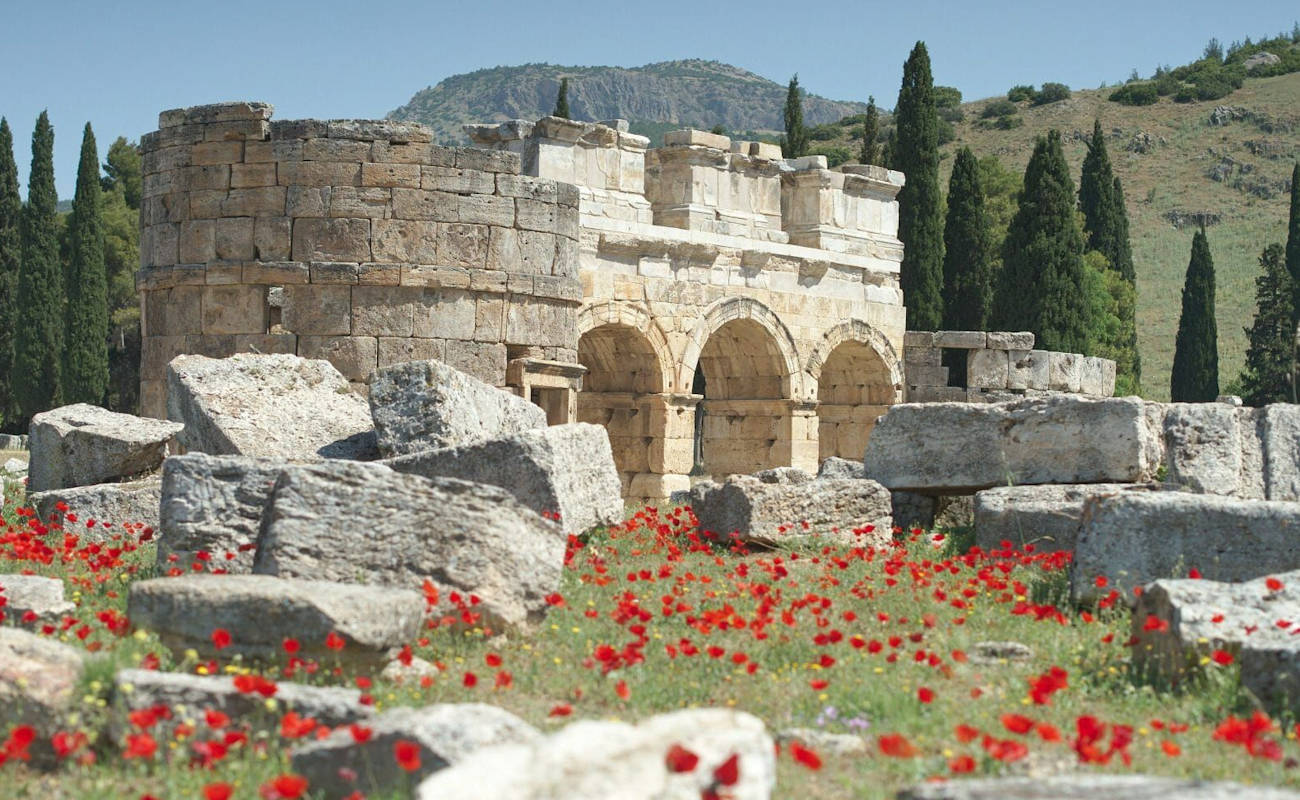
Pamukkale and Hierapolis
Pamukkale and Hierapolis, situated in modern-day Turkey, are two extraordinary ancient sites that offer a unique blend of natural wonder and historical significance. Mentioning their connections with the nearby ancient city of Ephesus enriches the narrative of this region.
Pamukkale, often referred to as the “Cotton Castle”, is renowned for its otherworldly terraces formed by the flow of thermal spring waters laden with calcium deposits. These terraces create a surreal landscape that appears as if it were made of pure white cotton, hence the name. Pamukkale’s natural pools and terraces have been a source of wonder and relaxation for millennia, attracting visitors from around the world.
Adjacent to Pamukkale lies Hierapolis, an ancient Roman city that thrived due to its proximity to the healing waters of Pamukkale. Hierapolis was known for its remarkable architectural achievements, including a grand theater, temples, and necropolises. Visitors to Hierapolis can explore its well-preserved ruins and gain insights into daily life in the Roman era.
Ephesus, another illustrious ancient city nearby, shares historical and cultural connections with Pamukkale and Hierapolis. Ephesus, with its Library of Celsus, the Grand Theater, and the Temple of Artemis, showcases the grandeur of the ancient Mediterranean world. These cities, Ephesus, Pamukkale, and Hierapolis, were part of the rich tapestry of the region, contributing to its intellectual, artistic, and architectural heritage.
Pamukkale and Hierapolis, with their stunning natural beauty and historical significance, continue to captivate visitors. The interconnectedness of these sites with Ephesus highlights the multifaceted history of the region, where natural wonders and human achievements have converged for millennia, creating a rich tapestry of culture and heritage.
